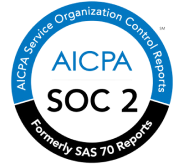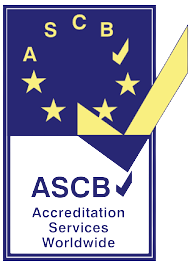Table of Content
- Introduction
- 5 reasons for an employer to care for employee wellbeing programs smartly
- Create a legacy of loyalists
- Encourage employees to contribute daily
- Make employees achieve more in a limited time
- Develop a happier mood in the workplace
- Avoid risk to one’s health at work
- Conclusion
- FAQs on Care for Employee Wellbeing Programs
Introduction
As we step into 2024 in a matter of a few days, the focus rolls back to the care for employee wellbeing programs. Organisations need to be proactive as the cultural hub for people to connect despite the blooming use of AI in HR and other integrated operations like finance, tech, and administration.
As much as we grow used to AI in HR, people have to connect more and remember the purpose for them to be a part of the team. Employers need to provide them with the right skills, tech tools, and platforms to exercise their potential to the maximum during working hours for maximising output.
In short, we are stepping into the era of achieving more by putting in less efforts with the role of AI becoming centralised. Humans at work need to be more thoughtful, precise, and clear in why they show up at work, for how long, and through which medium.
So when employers invest in future-proofed employee wellbeing programs, they make way for an ecosystem for an employed person to work with compassion and care. They continue their best as a part of the team. They understand that the employer values their voice, opinion, skill set, and expertise.
The environment becomes more cohesive because of thoughtful and carefully curated employee wellbeing programs. Because of these programs, employees want to stay back and remain in the firm for more years to come. Their engagement shoots up with a centralised social intranet in place, and they can make their lives easier to manage with predefined flexible working hours policies.
If you’re an employer or a Chief People Officer of your firm, read the post ahead. You can study the reasons in great detail below as to why you must start to care for employee wellbeing programs before 2024 arrives, and we start to wonder why employees are quietly quitting, coffee badging, or peacocking their way into the office.
Also read: Employee Wellbeing Trends In 2023
Want to skip the post?

5 reasons for an employer to care for employee wellbeing programs smartly
Create a legacy of loyalists
One of the prime reasons to focus on employee wellbeing programs is to persuade them to stick around. Where employers are always on the hunt for sticky customers, they should always find their relentless employees or staff members.
With assertive and proactive care programs like finding out when someone is overburdened with work, employers ensure that they make the environment psychologically fit for the staff.
When an employer becomes a top choice for the employee, they stick around. It is when the employer streamlines this process of continuous care that the workplace environment is best suited for the employee.
They connect emotionally with the existing culture. Hence, they wish to boost their growth, both personally and professionally, in the same company.
Encourage employees to contribute daily
Healthier employees will contribute daily. They will be present to work at punctual hours to add value to the company. Creative, enthralling, and thriving goals and KPIs make them want to show up at work daily at the right time.
When employers praise, recognise, and reward such employees regularly, they have this wave of excitement to show up at work regularly. They contribute their best at that time. It is the driving force for hardworking and smart employees to bring a new change in the jobs they perform and break certain benchmarks.
Employers can keep track of the targets and milestones achieved by the team by checking the monthly targets or delivering them at the backend. The performance management system we provide is smooth, streamlined, paperless, and transparent for the manager.
This data allows them to make strategic decisions where the growth of a team member is concerned. They understand and implement the right way to coach, mentor, or lead the person who has higher potential to contribute better every day.
Make employees achieve more in a limited time
Employers can bring in AI tools like AI Suggest, CV Parser, and HR bots as a medium of care for employee wellbeing programs. Such tools, which we provide in our HR Toolkit at uKnowva, are fast, reliable, and intelligent.
Recruiters have ample free time to finish priority tasks when their mundane and boring tasks are delegated to the AI tools. The pressure they felt earlier is now lesser. They have the freedom to exercise control over their usual work day or routine life at work.
Autonomy in work of this sort brings motivation to HR professionals like recruiters, talent hunters, and talent managers. They try their level best to show up at work and create the best environment possible for their staff.
So, within a limited period, these staff members in the HRD are able to achieve more effortlessly. It makes them more employable and deployable in the near future for the growth of everyone in the HR department.
Develop a happier mood in the workplace
An increased workload doesn’t make anyone happier. It makes the environment at work more stressful. Employees fail to concentrate when they have too much on their task lists.
Thus, HR leaders have to focus on making the workplace fun and full of compassion and care. To do so, the Happiness Meter is a tool they can leverage initially. It helps them identify their sad, happy, or tired employees.
Once the identification is clear, HR can drill deeper to know the reason or patterns from the people, HR, and content analytics. It will show the behaviour of an employee when they are using the tool during the assigned working hours.
Accordingly, the HR person or the reporting manager might reach out to the employee to coach them well. At least, they can have a heart-to-heart conversation to know the underlying or borderline issue a worker might be facing while feeling helpless to share.
Avoid risk to one’s health at work
HRs need to be serious about care for employee wellbeing programs to reduce the risk of unhealthy work culture. When people are falling sick, feeling depressed and overburdened, and are unable to perform on time, they are bound to take more leaves. This could spread a wave of negative emotions in the workplace.
When employees are not happy and healthy, absenteeism rates rise automatically. HRs can find this data on their backend on our tool. They can continuously study the peak seasons of falling sick, depressed, or feeling burdened with work.
During such periods, HR leaders and reporting managers must be proactive in supporting the team members in finding the right work-life balance. You can make use of the intranet to regularly touch base with your colleagues and know their innermost feelings and thoughts when at work.
Once you set a process, at least you will be aware of how to prevent your teammates from falling sick, feeling disengaged or disoriented at work.
Conclusion
The blog copy above discussed 5 reasons in detail to educate readers like you to start to care for employee wellbeing programs. This is the right time to care, implement, execute, and monitor employee wellbeing initiatives in your organisation before you go on a mass hiring spree when the season spikes with more investments, funding, or growth.
If you’re interested in implementing smart ways to initiate and spearhead inclusive, diverse, and equity-led wellness and wellbeing initiatives, you’re at the right place. With our HRMS portal, it is certainly possible.
You will know more when you connect with our customer support team to give you a free detailed demo of the tools that support the wellbeing of an employee, despite their seniority, ethnicity, job role, or working hours.
FAQs on Care for Employee Wellbeing Programs
Why is employee wellbeing a priority for organisations, and how do wellbeing programs contribute to a positive work environment?
Employee wellbeing is a priority as it directly impacts morale, productivity, and retention. Wellbeing programs contribute by addressing physical and mental health, fostering a healthier work-life balance, and creating a positive workplace culture.
What are the key components of a successful employee wellbeing program, and how can organisations tailor them to meet the diverse needs of their workforce?
Successful wellbeing programs include mental health support, fitness initiatives, flexible work arrangements, and social activities. Tailoring involves understanding diverse needs through surveys and feedback sessions and offering a range of options to accommodate various preferences.
How can employers measure the effectiveness of wellbeing initiatives, and what metrics are commonly used to gauge the impact on employee satisfaction and productivity?
Effectiveness can be measured through employee surveys, absenteeism rates, productivity metrics, and healthcare cost trends. Key indicators include employee satisfaction scores, engagement levels, and the organisation's overall performance.
In what ways can technology and AI be integrated into employee wellbeing programs to enhance accessibility and personalisation?
Technology can offer online resources, AI-driven health assessments, and personalised recommendations. Chatbots and virtual support can provide instant assistance, making wellbeing resources more accessible and tailored to individual needs.
How can organisations ensure that wellbeing programs are inclusive and address the mental health needs of all employees, considering diverse backgrounds and experiences?
Inclusivity involves cultural competence training, providing resources in multiple languages, and acknowledging diverse mental health perspectives. Regularly seeking feedback from employees of various backgrounds ensures that programs are relevant and accommodating.
What role do leadership and management play in fostering a culture of wellbeing, and how can organisations encourage buy-in from all levels of the workforce?
Leadership sets the tone by prioritising wellbeing, modelling healthy behaviours, and supporting initiatives. Organisations can encourage buy-in through effective communication, involving employees in program design, and recognising and celebrating wellness achievements.












